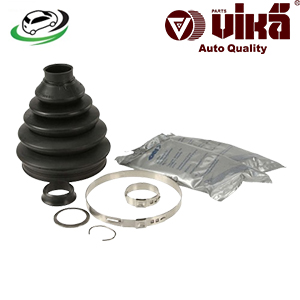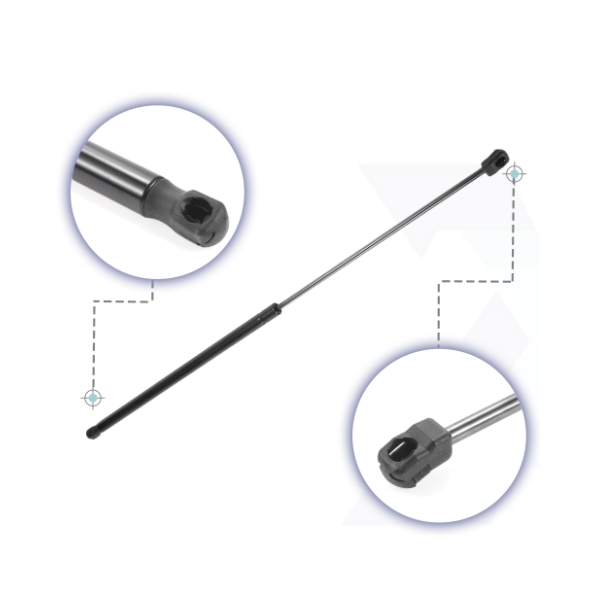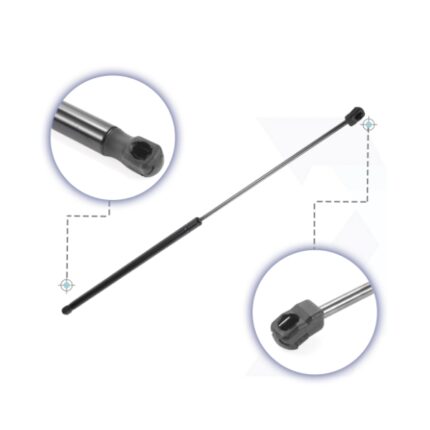Get VW Jetta 2010-2014 Front Bonnet Gas Struts 5K0823359B in Kenya
Bonnet gas struts, also known as hood struts or lift supports, are essential components in many vehicles. They assist in raising, holding, and lowering the car’s bonnet (hood) with ease. This article explores the function of bonnet gas struts, the different types available, their benefits, common symptoms of wear, and maintenance tips to ensure their longevity and optimal performance.
Function of Bonnet Gas Struts
Bonnet gas struts are hydraulic or gas-filled cylinders that support the bonnet when it is lifted. Their primary functions include:
- Support: They hold the bonnet open securely, preventing it from falling or closing accidentally while you are working under it or accessing the engine compartment.
- Ease of Operation: Gas struts assist in lifting the bonnet and provide controlled resistance, making it easier to open and close the bonnet smoothly.
- Safety: By keeping the bonnet open securely, gas struts ensure that it does not suddenly drop, reducing the risk of injury and damage.
Types of Bonnet Gas Struts
- Hydraulic Gas Struts:
- Composition: These struts use a hydraulic fluid to provide support and damping.
- Advantages: They offer smooth and controlled motion, providing reliable support and stability.
- Disadvantages: They may require more maintenance due to potential fluid leaks or degradation over time.
- Gas-Charged Struts:
- Composition: These struts are filled with compressed gas (usually nitrogen) that provides the necessary support.
- Advantages: Gas-charged struts are typically more durable and offer consistent performance with less maintenance.
- Disadvantages: Over time, the gas can leak, leading to reduced effectiveness.
- Combination Struts:
- Composition: These struts combine hydraulic fluid and gas to offer a balance of smooth operation and durability.
- Advantages: They provide a mix of the benefits of hydraulic and gas-charged struts, such as smoother movement and longer service life.
- Disadvantages: They can be more complex and costly compared to single-type struts.
Benefits of Bonnet Gas Struts
- Ease of Use:
- Explanation: Gas struts make it easier to lift and hold the bonnet open with minimal effort. The controlled resistance provided by the struts ensures a smooth and effortless operation.
- Enhanced Safety:
- Explanation: By holding the bonnet securely in place, gas struts prevent accidental closure, reducing the risk of injury or damage to the vehicle and its components.
- Durability and Longevity:
- Explanation: Quality gas struts are designed to withstand repeated use and exposure to harsh environmental conditions. They offer reliable performance and long-term durability.
- Improved Functionality:
- Explanation: Properly functioning gas struts ensure that the bonnet remains open at the desired angle, providing easy access to the engine compartment for maintenance and repairs.
- Reduced Wear and Tear:
- Explanation: Gas struts help distribute the weight of the bonnet evenly, reducing stress on the bonnet hinges and latch mechanism. This can extend the lifespan of these components.
- Aesthetics:
- Explanation: Gas struts are often designed to be discreet and visually appealing, enhancing the overall look of the engine bay without the need for bulky support rods.
Symptoms of Worn or Faulty Bonnet Gas Struts
- Difficulty in Lifting or Holding the Bonnet:
- Symptom: The bonnet may be difficult to lift or may not stay open securely.
- Cause: This indicates that the gas struts are losing their ability to provide adequate support and may need replacement.
- Bonnet Falls or Drops:
- Symptom: The bonnet may suddenly fall or drop while it is open.
- Cause: Worn-out or failing gas struts can no longer hold the bonnet in place, posing a safety risk.
- Visible Leaks or Oil Residue:
- Symptom: You may notice oil or fluid leaks around the struts.
- Cause: Leaking hydraulic fluid or gas indicates that the struts are damaged and need to be replaced.
- Uneven or Jerky Movement:
- Symptom: The bonnet may open or close unevenly or jerkily.
- Cause: Faulty gas struts can cause inconsistent movement, affecting the smooth operation of the bonnet.
- Strut Damage:
- Symptom: Visible physical damage, such as dents, bends, or corrosion, on the gas struts.
- Cause: Physical damage can affect the performance of the struts and may require replacement.
Maintenance and Replacement Tips
- Regular Inspection:
- Tip: Periodically inspect the gas struts for signs of wear, damage, or leaks. Check the bonnet’s operation and listen for any unusual noises.
- Prompt Replacement:
- Tip: Replace worn or faulty gas struts as soon as symptoms are noticed. Delaying replacement can lead to further damage and safety risks.
- Choose Quality Parts:
- Tip: Use high-quality gas struts that match the manufacturer’s specifications for your vehicle. Quality parts ensure better performance and longevity.
- Professional Installation:
- Tip: Have gas struts installed by a professional mechanic to ensure proper fit and function. Improper installation can affect the performance and safety of the struts.
- Cleaning and Maintenance:
- Tip: Keep the gas struts and surrounding areas clean to prevent dirt and debris from causing damage. Regular cleaning can help maintain the struts’ performance.
- Avoid Overloading:
- Tip: Do not place excessive weight or pressure on the bonnet, as this can stress the gas struts and lead to premature wear.
Follow us on Facebook for more parts.




